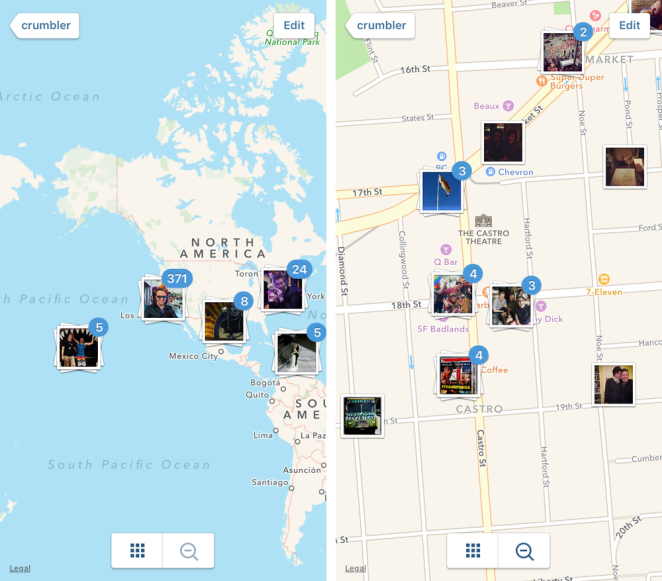After coming back from my trip to South Korea for a short winter exchange last winter break, I received comments (IRL) when I got back to Singapore.
“How was your trip to Korea? Was it fun?”
“Wah… You really look like a Korean wearing the hanbok!”
“Was it cold there?”
“Did you meet any cute Korean guys? 😉“
For a moment, I was shocked. My mind went into alarm mode, and all I could say was, “How did you know sia???”
“From your Facebook lor…”
Well, that explains everything…except that I DIDN’T POST ANYTHING ON FACEBOOK ABOUT MY TRIP TO KOREA… 😨 (If you don’t know me yet, I practically live in my own world in the social media circle. Other than doing my bestest to post stuffs on my Instagram for the sake of being a Millennial, I’m almost virtually absent from the Internet. Or am I?)
Thanks to my friend who went with me for this trip, I have pictures of me in Korea all over my Facebook page. And all this is made possible because of TAGGING.
When I was thinking about the topic of tagging, meta tags came into mind (since this is an introduction to the Internet class).

Basically, meta tags help people to find things that you put on your web page. They are like bookmarks that indicate whatever content that you have, so that it makes it easier for people to search for the information that they want.
However, meta tags are meant for HTML, so they are hidden from our eyes (which make them a clever way to boost your Search Engine Optimization).
On the social media platform, tagging becomes more transparent. Based on my experience on Instagram, there are 3 kinds of tags that we can use:
1. #Hashtags
Hashtags are ways to categorize topics/trends/keywords on social media. This is pretty much similar to the idea of meta tags, except that hash tags are more explicit, and that they link you up to other posts that have included the same hashtag. Even though hashtags are often linked up to social media, people have been using them way back in 1988 when people were using Internet Relay Chat (IRC) (Do people still use IRC?). It was only in 2007 when hashtag saw its first light on social media.
https://twitter.com/chrismessina/status/223115412
On top of just thinking that hashtags merely categorize things, a hashtag in itself carries a message. Remember that hashtags are highly visible strings of words? Companies have even leveraged on hashtags to run their campaigns on social media.
Because hashtags hold the power to bring like-minded people together despite being geographically dispersed, it’s also important for users to know how to use them properly if they want to take advantage of hashtags. Don’t be like me and create your own hashtag that no one would ever use, because it kinda defeats the purpose of having a hashtag.
https://www.instagram.com/p/3HIR-itavs/
#only6peoplecameforclass
2. Geotags
Geotag is short for geographical tag, which, as its name implies, tags your location to your post. I guess it’s a good place to let people know where you were when you enjoyed that yummy meal, or when you saw that awesome scenery. (Alternatively, it can also be a way for people to stalk find you when you said that you couldn’t make it for that group project meeting. *ahem*)
Instagram used to have a photo map, which displayed your pictures according to the location you’d taken them at. Its intention was probably for globe trekkers to leave a mark of their travels behind, but since not many people are using it, it seemed like a better idea to remove this feature completely.

3. User tags
User tags is somewhat self-explanatory; they are tags that you use when you want to tag people to your posts, to your photos, to your comments, etc. (I think I’d probably made this term up because I can’t seem to find it online.) In short, it’s a way to include other people to your social media life, simply by using the sign @ with their username (i.e. @charissalum).
Ultimately, this means that as long as you have a social media account, even if you choose to never post anything in your entire life, your online presence would still be made known if you socialize IRL and your friends are active social media users.
This brings me back to my trip to Korea; I didn’t have to tell my friends or people whom I know about it because Facebook told them so. And they didn’t have to be extra interested about my life because my life automatically came to them on their feed (I highly doubt anyone would want to be interested in my life anyway).
This can be a scary thing, if you think about it, when the majority of your Facebook friends may very well be just strangers. Or what if the posts/pictures that you’re tagged to are embarrassing? Perhaps before you are able to untag yourself from them, a handful of Facebook friends may have already seen them (and have secretly judged you).
Of course, tagging on social media has its advantages as well. It helps you to keep track of your entire life (if you’re active on it, that is) in a nice little timeline, which you can look back to in the future. Who knows? It might even be like the photo albums that we have that we can look together with our grandchildren next time.

Sources:

This is so interesting! I knew there were a few tagging systems but I never sat down to analyse all three of them! And I never knew that they were called meta tags! Btw, loving the personal examples from Insta!
LikeLike